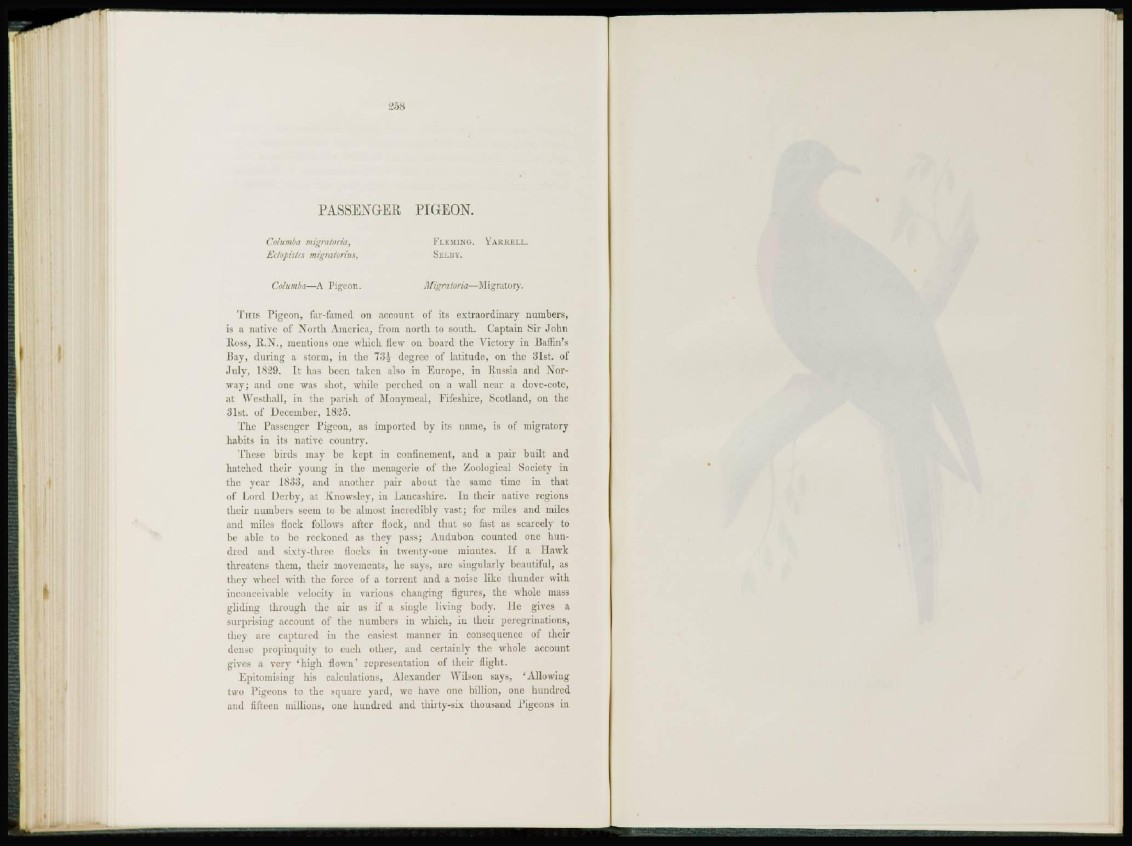
PASSENGER PIGEON.
Columba migratoria,
Ectopùtts migra tortus,
FLEMING. VARKELL.
SELBV.
Columba—A Pigeon. Migra tor ia— M igrato r y.
T h i s Pigeon, far-famed on account of its extraordinary numbers,
is a native of North America, from north to south. Captain Sir John
Ross, R.N., mentions one which flew on board the Victory in Baffin's
Bay, during a storm, in the 73£ degree of latitude, on the 31st. of
J u l y , 1829. It has been taken also in Europe, in Russia and Norway;
and one was shot, while perched on a wall near a dove-cote,
at Westhall, in the parish of Monymeal, Eifeshirc, Scotland, on the
31st. of December, 1825.
The Passenger Pigeon, as imported by its name, is of migratory
habits in its native country.
These birds may be kept in confinement, and a pair built and
hatched their young in the menagerie of the Zoological Society in
the year 1833, and another pair about the same time in that
of Lord Derby, at Knowsley, in Lancashire. In their native regions
their numbers seem to be almost incredibly vast; for miles and miles
and miles flock follows after flock, and that so fast as scarcely to
be able to be reckoned as they pass; Audubon counted one hundred
and sixty-three flocks in twenty-one minutes. If a Hawk
threatens them, their movements, he says, are singularly beautiful, as
they wheel with the force of a torrent and a noise like thunder with
inconceivable velocity in various changing figures, the whole mass
gliding through the air as if a single living body. He gives a
surprising account of the numbers in which, in their peregrinations,
they arc captured in the easiest manner in consequence of their
dense propinquity to each other, and certainly the whole account
gives a very ' h i g h flown' representation of their flight.
Epitomising his calculations, Alexander Wilson says, 'Allowing
two Pigeons to the square yard, we have one billion, one hundred
and fifteen millions, one hundred and thirty-six thousand Pigeons in